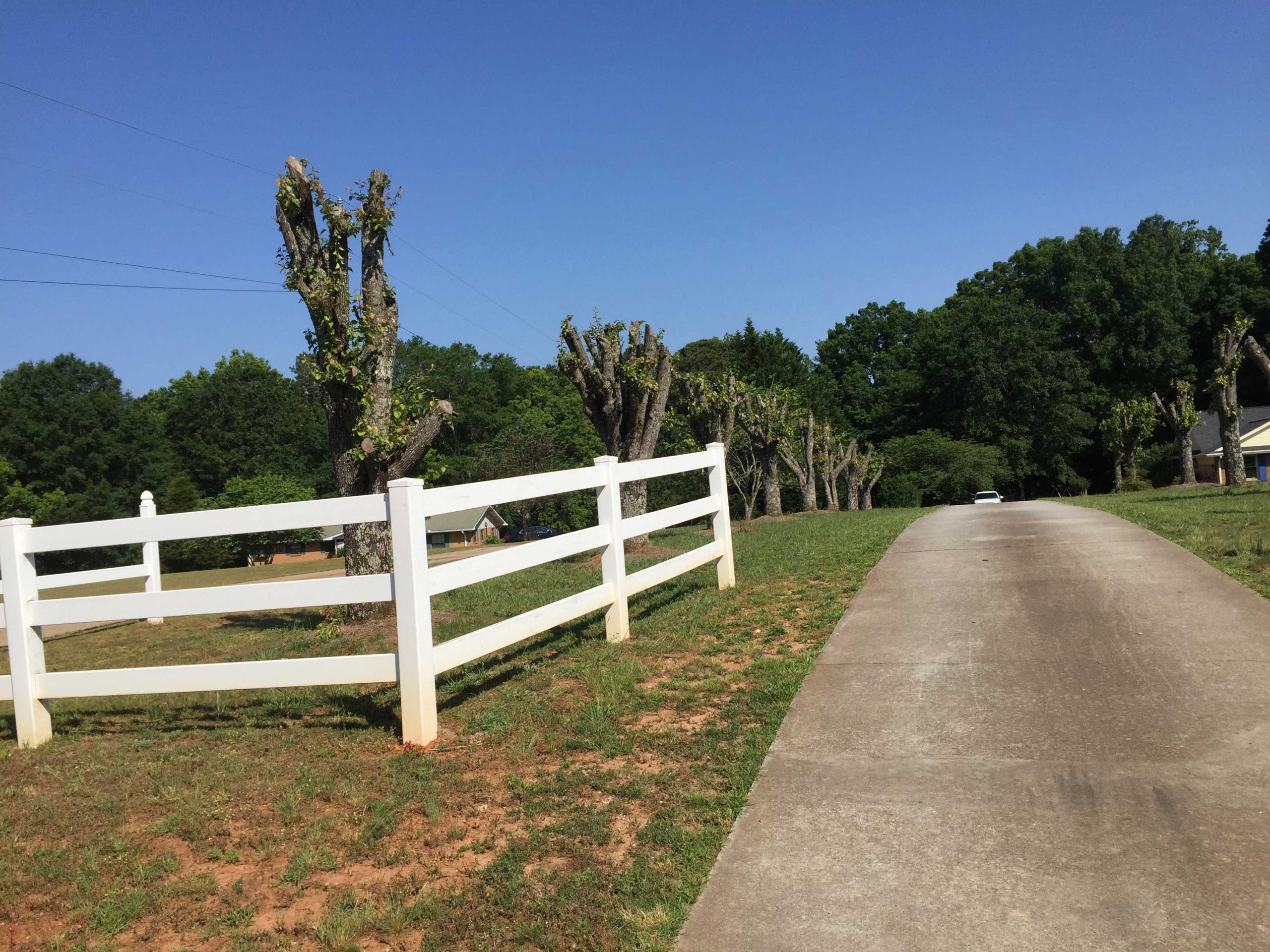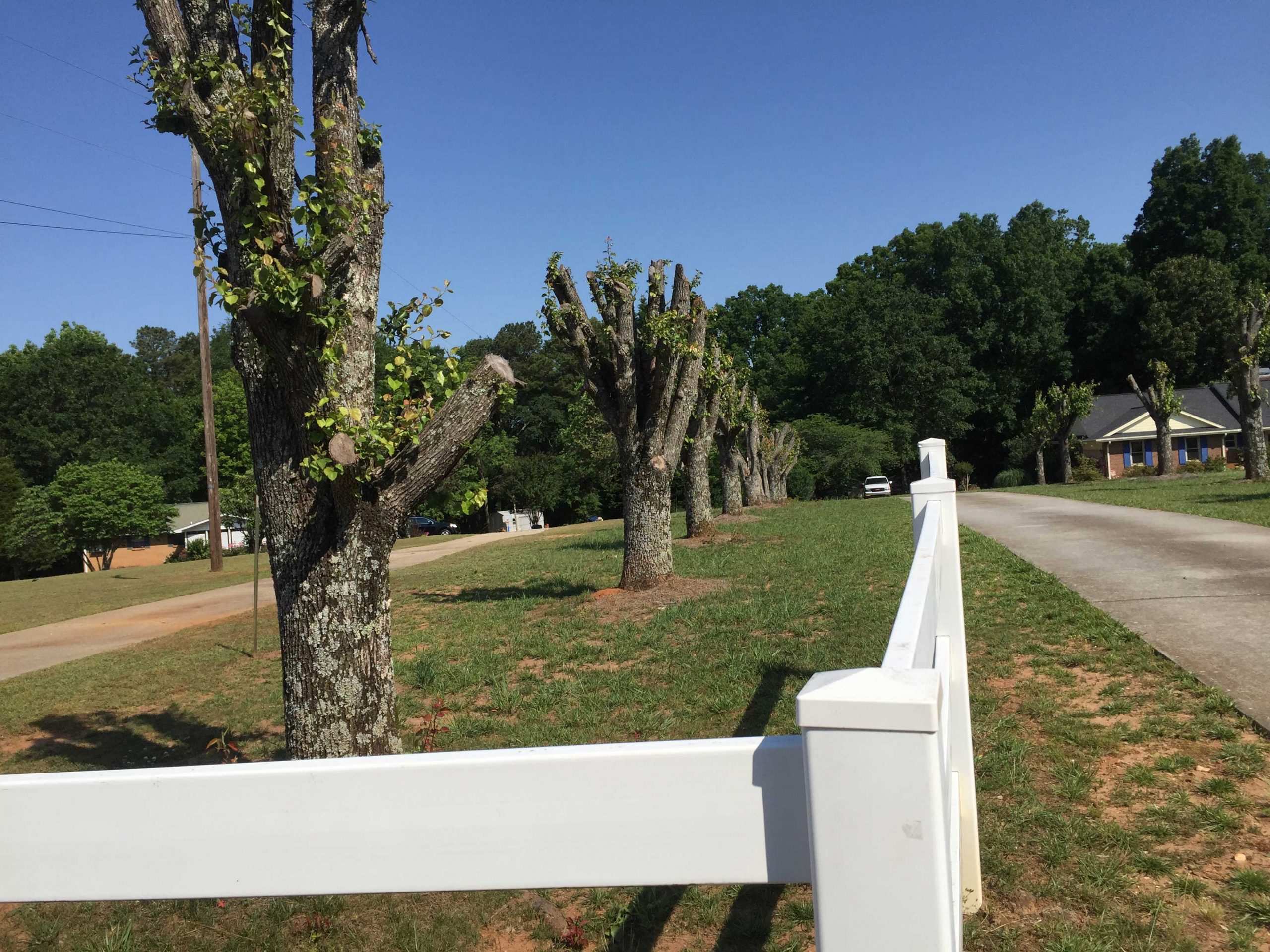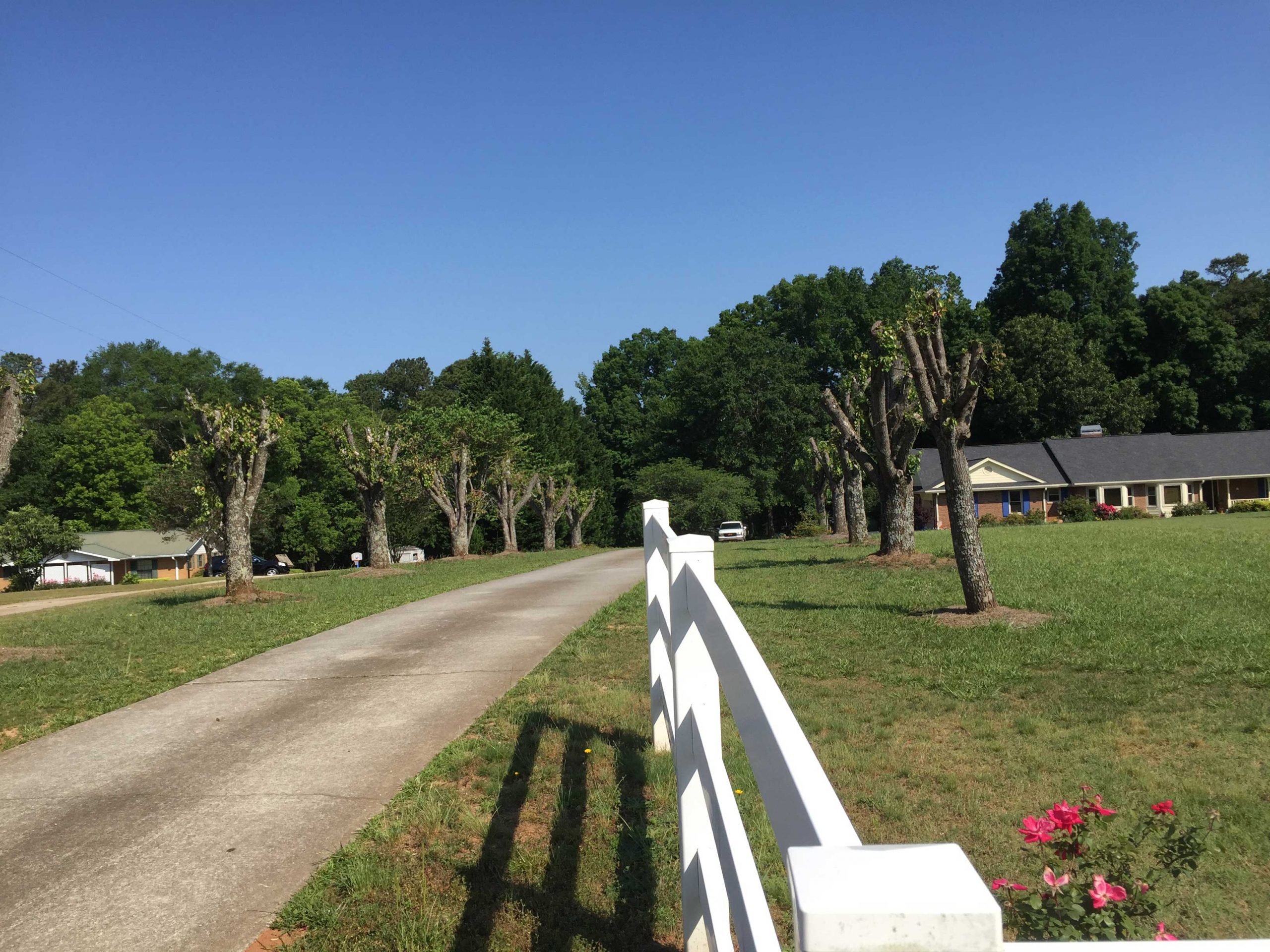Bradford Pear – Severely Pruned

When I spotted these poor ‘Bradford’ pears, I was horrified! Surely a knowledgeable arborist hadn’t done this!
But I’m not a professional arborist so I asked someone who is: Art Morris, ISA certified arborist .
My question to him: Is there any way at all this pruning could be a solution?
Art’s response:
“To answer your question, yes…and no.
I’ve seen this done to Bradford pears several times, and I’ve had prospective clients ask me to do it, so this idea has been around for a while. I suppose that YES, in the short term, topping a Bradford pear virtually eliminates the risk of immediate branch failures. With that said, NO it is not a solution; in cases like this I generally just recommend removal of the trees and replanting with a more desirable species.
Topping of trees is prohibited by arborist’s professional standards (ANSI A300) for several reasons:
1. Topped trees are likely to decline and die due to the total loss of leaf surface area (this is generally the best outcome for a homeowner).
2. If the tree survives, it will sprout vigorously-growing epicormic shoots (often called water sprouts) which are very weakly attached to the trunk. Simultaneously, the ‘pruning’ cuts that were made will begin to decay, further compromising the structure of the tree.
3. In the event of branch failure after topping, that causes property damage or personal injury, in many jurisdictions the tree owner and/or tree company could be held liable for negligence.
So, essentially, topping takes a tree that could possibly fail and transforms it into a tree that won’t fail right away, but will almost certainly fail after it recovers from the damage.”
See also Hatrack Pruning


















